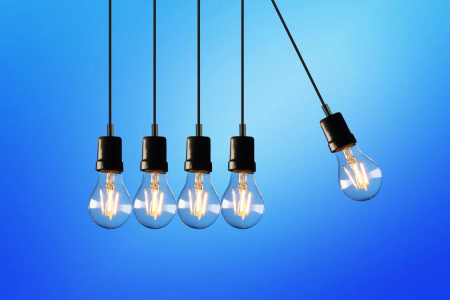Could this be the end of skyrocketing power bills? The government’s latest plan explained
By
Maan
- Replies 146
Rising energy costs have left many households struggling to keep up, with families searching for long-term solutions to ease the financial burden.
A new initiative could offer a game-changing opportunity, promising significant relief for those looking to cut their power bills.
As plans unfold, questions arise about who will benefit, how it will work, and what this could mean for the future of household energy use.
The Australian government expanded its efforts to help households reduce energy costs by extending a $144 million electrification initiative.
Federal Climate Change and Energy Minister Chris Bowen directed the Australian Renewable Energy Agency (ARENA) to consider funding more community electrification demonstration projects.
This decision followed the success of ‘Electrify 2515’, a $12 million pilot program in the 2515 postcode near Wollongong.
The program provided subsidies for households to switch to energy-efficient electric appliances and move away from gas power.
ARENA had backed 49 projects over six years, and the agency was now exploring similar programs in the ACT, Western Australia, Queensland, Victoria and Tasmania.
Participating households received support to install solar panels, home batteries and energy-efficient appliances, along with access to shared community energy storage.
By transitioning to solar electricity, families could see a significant drop in energy bills, with experts citing it as a major cost-saving measure during the ongoing cost-of-living crisis.
‘In this cost-of-living crisis one of highest-impact, non-inflationary things governments can do is to help households electrify and deliver thousands in permanent power bill relief,’ Senator David Pocock said.
Low-income families often struggled with the upfront cost of replacing appliances, making it harder for them to access these savings, which the programs aimed to address.
‘On average, homes with rooftop solar save $1500 per year on energy bills and the Climate Council, along with other organisations, has long called for those savings to be more accessible to low-income households,’ Climate Council chief executive Amanda McKenzie said.
Beyond household savings, these projects contributed to Australia’s transition away from fossil fuels and helped reduce emissions.
Swinburne renewable energy expert Professor Mehdi Seyedmahmoudian highlighted the importance of the initiative, noting that it aligned with the suburban-wide microgrid concept.
‘These trials are designed to enable communities and individual households to participate in an open, distributed energy market where energy is produced, consumed, and managed locally,’ he said.
‘This approach not only offers technological benefits but also presents an appealing business model for private sector investment in developing community-level energy management and transaction technologies.’
‘By scaling these proven strategies to a suburban context, the suburban-wide microgrid can accelerate the energy transition, enhance resilience, and support a sustainable future for communities across Australia.’

Would you make the switch if the subsidies were available in your area? Let us know in the comments.
A new initiative could offer a game-changing opportunity, promising significant relief for those looking to cut their power bills.
As plans unfold, questions arise about who will benefit, how it will work, and what this could mean for the future of household energy use.
The Australian government expanded its efforts to help households reduce energy costs by extending a $144 million electrification initiative.
Federal Climate Change and Energy Minister Chris Bowen directed the Australian Renewable Energy Agency (ARENA) to consider funding more community electrification demonstration projects.
This decision followed the success of ‘Electrify 2515’, a $12 million pilot program in the 2515 postcode near Wollongong.
The program provided subsidies for households to switch to energy-efficient electric appliances and move away from gas power.
ARENA had backed 49 projects over six years, and the agency was now exploring similar programs in the ACT, Western Australia, Queensland, Victoria and Tasmania.
Participating households received support to install solar panels, home batteries and energy-efficient appliances, along with access to shared community energy storage.
By transitioning to solar electricity, families could see a significant drop in energy bills, with experts citing it as a major cost-saving measure during the ongoing cost-of-living crisis.
‘In this cost-of-living crisis one of highest-impact, non-inflationary things governments can do is to help households electrify and deliver thousands in permanent power bill relief,’ Senator David Pocock said.
Low-income families often struggled with the upfront cost of replacing appliances, making it harder for them to access these savings, which the programs aimed to address.
‘On average, homes with rooftop solar save $1500 per year on energy bills and the Climate Council, along with other organisations, has long called for those savings to be more accessible to low-income households,’ Climate Council chief executive Amanda McKenzie said.
Beyond household savings, these projects contributed to Australia’s transition away from fossil fuels and helped reduce emissions.
Swinburne renewable energy expert Professor Mehdi Seyedmahmoudian highlighted the importance of the initiative, noting that it aligned with the suburban-wide microgrid concept.
‘These trials are designed to enable communities and individual households to participate in an open, distributed energy market where energy is produced, consumed, and managed locally,’ he said.
‘This approach not only offers technological benefits but also presents an appealing business model for private sector investment in developing community-level energy management and transaction technologies.’
‘By scaling these proven strategies to a suburban context, the suburban-wide microgrid can accelerate the energy transition, enhance resilience, and support a sustainable future for communities across Australia.’
Key Takeaways
- The Australian government expanded a $144 million electrification initiative, directing ARENA to fund more community projects after the success of ‘Electrify 2515’, which helped households transition from gas to energy-efficient electric appliances.
- Over six years, ARENA supported 49 projects, and similar programs were now being considered in the ACT, Western Australia, Queensland, Victoria and Tasmania, providing subsidies for solar panels, home batteries and shared community energy storage.
- Experts highlighted the potential for significant savings, especially for low-income households, with rooftop solar alone reducing energy bills by an average of $1500 per year.
- The initiative aligned with the suburban-wide microgrid concept, offering technological and economic benefits while helping Australia reduce emissions and transition away from fossil fuels.
Would you make the switch if the subsidies were available in your area? Let us know in the comments.








